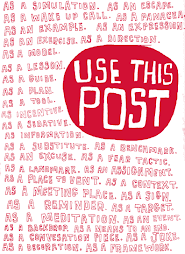comment on his post... People get lost in their tools far too easily and forget what the original purpose of those tools were.
another comment... (a lot of apps) are building a “tool” that is focusing on being an application, rather than sharing content.
from a conversation on cooperative catalyst with @paulawhite :
it’s not that so much has to change.. (from teachers who really know how to make those connections happen)..it’s that the web allows more of those connections to happen… which – as messy and different as it seems – makes everything simpler and much more meaningful.
we have to help teachers understand the web – that it’s not tools and apps and bling – it’s those connections to people and content – per passion – that makes it so beautiful – that can make all we do so valuable.
i only wish more teachers could see and believe this – you wrote:
I have time, because they are mostly self-directed and internally driven, to work with individuals or small groups, DIRECTLY on the skills they need at that moment in time.
most resonating part to me from his post:
Want to know if your ‘HTML application’ is part of the web? Link me into it. Not just link me to it; link me into it. Not just to the black-box frontpage. Link me to a piece of content. Show me that it can be crawled, show me that we can draw strands of silk between the resources presented in your app. That is the web: The beautiful interconnection of navigable content. If your website locks content away in a container, outside the reach of hyperlinks, you’re not building any kind of ‘web’ app. You’re doing something else.
Palm WebOS applications are awesome, but they are not part of the web. An app might interact with data on the web, and they are built with similar HTML, CSS and JavaScript technologies. That’s great, but they are not a connected, interlinked part of the web.
We’re talking about two very different things: The web of information and content, and a desire for a free, cross-platform Cocoa or .NET quality application framework that runs in the browsers people already use. The latter cause is louder, and risks stomping over the more valuable, more important, more culturally indispensable part of the web.
post via @gsiemens
______________________________________________________





































